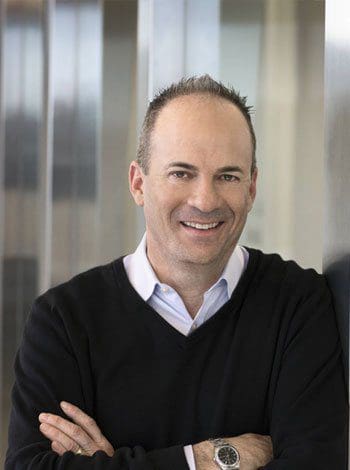There are a number of types of instruments that an employer can issue key employees and independent contractors (employees and independent contractors are referred to collectively as “service providers” to signify that the benefit discussed applies to independent contractors as well as employees) to give the service providers a piece of the upside in the enterprise. This article will a summary of most of the popular ones, their standard terms and their tax treatment for the employer and employee or contractor.
What can be issued depends in large part on the type of entity that the employer is. There are some instruments like options that both a corporation and a limited liability company (LLC) may issue and some that only one or other may issue.
Corporations may issue incentive instruments that are geared to the value of their stock, like options and stock appreciation rights. An option is the right to purchase a share of the employer’s stock at an agreed price. The exercise price should not be less than the stock value as of the date of issuance of the option. Failure to do so will result in income inclusion to the recipient service provider under Section 409A of the Internal Revenue Code (the “Code”). That income would be able to be included in the year of receipt and annually as the spread between stock value and exercise price increases. (Treasury Regulation §1.409A-1(b)(5).) The need to value the stock of closely held employers to maintain compliance with Section 409A has created a demand for “409A appraisals” within the valuation industry. Treasury Regulation §1.409A-(b)(5)(iv)(B)(2)(iii) affords a safe harbor for an employer that bases its valuation on a good faith written valuation report.
There are two kinds of options that a corporation may issue, incentive stock options (“ISOs”) and non-qualified options (“NQOs”). The benefits of ISOs are (a) the exercise of an ISO does not result in ordinary compensation income for the option holder and (b) income, in the form of capital gain, is not recognized until the stock is disposed of. (Code Section 422(a).) If the optionee holds the stock for at least two years from the date of issuance of the ISO and at least one year from date of exercise of the ISO, the gain on the sale of the stock would be long term capital gain.
To be an ISO the option must have been issued to an employee (not an independent contractor or outside director) of an employer corporation; the option must have been issued pursuant to a plan approved by the corporation’s shareholders within 12 months of the adoption of the plan by the corporation’s board; the option may not have more than a 10 year term from the date of issuance; the option may not be transferable and may not be issued to a 10% or more shareholder (the option must have an exercise price of more than 110% of the stock’s value on the date of issuance if the option is issued to a 10% or more shareholder). (Code Section 422(b).)
Exercise of an NQO results in income for the service provider in the difference between the value of the stock and the exercise price on the date of exercise. That benefit is tempered by the inclusion of the difference between stock value and exercise price of an ISO in alternative minimum taxable income, potentially implicating the alternative minimum tax for the option holder.
A stock appreciation right (SAR) is the right of a service provider to receive a cash bonus in the amount of the stock value on the date of exercise over the stock value on the date of issuance. Exercise of the SAR may be limited to certain events or may exercisable at any time by the service provider, both employee and independent contractor. To avoid the reach of Section 409A, the SAR must be based on appreciation over the value of the stock on the date of issuance of the SAR.
Phantom stock rights and restricted stock units (RSUs) are the right to receive a cash bonus equal the value of the employer’s stock. (“A RSU provides a right to receive an amount of compensation based on the value of stock that is payable in cash, stock, or other property.” (Treas. Dec. 9716 (Apr. 1, 2015).) Because Section 409A applies to the right to receive a cash bonus, payments with respect to phantom stock rights and RSUs effectively have to be limited as follows:
(1) the service provider's “separation from service”, subject to a six-month delay requirement for separation from service of a “specified employee” (generally an officer or highly compensated employee of a public company);
(2) the date the service provider becomes “disabled”;
(3) the service provider's death;
(4) a specified time or fixed schedule specified under the plan at the date of the deferral of the compensation;
(5) a change in the ownership or effective control of the corporation, or in the ownership of a substantial portion of the corporation's assets; or
(6) the occurrence of an “unforeseeable emergency.”
Grants of equity or any property (options are excluded from the term property for this purpose) to a service provider result in compensation income upon the earlier of issuance of the property or the lapse of any restrictions on the grant. (Code Section 83(a) and Treasury Regulation §1.83-3(a)(2).) The recipient service provider has the ability to include the value of the unvested equity grant in income as of the date of receipt. (Code Section 83(b).) In a start up, the election is almost always made to include the value of the equity grant in income as of the date of issuance, despite the risk that the vesting requirements might never vest, but with any gain on the sale of the equity eligible for long term capital gain treatment if the holding period of one year is met.
Limited liability companies (LLCs) as well as limited partnerships and general partnerships may offer all of the incentive compensation instruments that a corporation can except for ISOs. But, LLCs may offer profits interests which are probably the best incentive compensation instruments available.
A profits interest is an interest in an LLC that by definition would yield the recipient no share of the proceeds if the LLC's assets were sold at fair market value and then the proceeds were distributed in a complete liquidation of the LLC. This determination generally is made at the time of receipt of the LLC interest. (Revenue Procedure 93-27, 1993-2 C.B. 343.) The profits interest treatment is only open to interests granted for services to the LLC. The concept of a profits interest as not being includible in the recipient’s income on receipt is beneficial as the benefit is not dependent on the valuation of the interest granted, but on the assets of the LLC.
When a profits interest is granted, the LLC values its assets and sets that value as the “base value” or the “threshold amount.” Once the LLC has made cumulative distributions equal to the base value/threshold amount, the profits interest participates along with the other holders of the class of LLC interest granted. If the LLC sells an asset and recognizes long term capital gain, the profits interest holder recognizes long term capital gain as well.
Unlike an ISO in the corporate context, there is no income on grant of the profits interest (either for regular tax or alternative minimum tax purposes).
____________________________________________

For more information about the Incentive Compensation Plans and the Tax & Estate Planning Practice at Stubbs Alderton & Markiles, LLP, contact Michael Shaff at
Los Angeles, CA - May 13, 2016 Stubbs Alderton & Markiles announces that it represented its client D-Software, d/b/a Zephyr, one of the software industry’s fastest-growing providers of real-time, on-demand enterprise test management solutions, in an investment deal of $31M from Frontier Capital.
Based in Newark, Calif., in the epicenter of the software industry, Zephyr provides more than 8,500 customers in over 100 countries with innovative applications, seamless integrations and unparalleled, real-time visibility into the quality and status of their software development projects. With additional operations in London and Bangalore, the company has more than doubled its customer base in the past 12 months by helping companies like LG Electronics, Adobe, HSBC, Honda, Oracle, Citibank, Amex, GE, Starz and Hyundai drive down costs and bring higher quality software to market faster.
The $31 million investment from Frontier Capital will be used to fund key growth initiatives for the company like enhancing the product portfolio and scaling sales and marketing capabilities, according to Zephyr founder and CEO Samir Shah.
“Partnering with Frontier Capital will help us realize our potential by investing in the critical business functions that will fuel our growth,” said Shah. “Their business acumen and experience helping similar next-stage growth companies achieve their goals will be just as, if not more, valuable to us than the money they have invested. We are excited to have Frontier on board as an engaged partner and look forward to working with them to build a market leader.”
SAM Partner Scott Alderton has represented D-Software, d/b/a Zephyr, since its inception and Stubbs Alderton as a whole is very proud of their success. SAM Partners that led this deal include Scott Galer, and Scott Alderton
To read the full Zephyr press release, click here.
About Frontier Capital
Frontier Capital is a Charlotte-based growth equity firm focused exclusively on software and technology-enabled business services companies. Founded in 1999, Frontier partners with management teams that can benefit from capital to accelerate growth, fund acquisitions or generate shareholder liquidity. The firm makes minority and majority equity investments in high growth companies and has built an excellent track record of delivering returns to both investors and management partners. For more information, please visit frontiercapital.com.
About Zephyr
Zephyr is a leading provider of on-demand enterprise test management solutions, offering innovative applications, seamless integrations and unparalleled, real-time visibility into the quality and status of software projects. Zephyr products are the fastest-growing agile test management products in the world, with more than 8,500 global customers in over 100 countries. Their feature-rich products address today’s dynamic and global needs across a variety of industries including finance, healthcare, media, automotive, IT services and enterprise software. Zephyr is headquartered in Newark, Calif., with offices in Europe and India. For more information, please visit www.getzephyr.com.
About Stubbs Alderton & Markiles, LLP
Stubbs Alderton & Markiles, LLP is a business law firm with robust corporate, public securities, mergers and acquisitions, entertainment, intellectual property, brand protection and business litigation practice groups focusing on the representation of, among others, venture backed emerging growth companies, middle market public companies, large technology companies, entertainment and digital media companies, investors, venture capital funds, investment bankers and underwriters. The firm’s clients represent the full spectrum of Southern California business with a concentration in the technology, entertainment, videogame, apparel and medical device sectors. Our mission is to provide technically excellent legal services in a consistent, highly-responsive and service-oriented manner with an entrepreneurial and practical business perspective. These principles are the hallmarks of our Firm. For more information, please visit www.stubbsalderton.com.
Media Contact:
Heidi Hubbeling
(310) 746-9803
Congratulations to SAM Preccelerator® Program company Napkin Finance, a subsidiary of CardBlanc. Napkin Finance has teamed up with the White House to promote financial literacy among students and young adults, and assist them with preparing for college and Federal Student Aid. This is part of President Obama and the First Lady's Reach Higher, Better Make Room and National College Signing Day initiatives.
The White House just released the Fact Sheet "Celebrating Progress in Expanding College Opportunity for Every Student on College Signing Day." In regards to Napkin Finance it states, "Napkin Finance breaks down financial concepts in a simple, engaging, and visual way in 30 seconds or less. Most importantly, it teaches teens and young adults how to make smart money decisions and build a lifetime of financial well-being. For the First Lady’s Better Make Room initiative, Napkin Finance has created a course with “napkins” that prepare students for the financial challenges of a college education. The Better Make Room collaboration with Napkin Finance will inspire and empower teens to fill out the FAFSA, learn more about options for paying for college, understand how student loans work, and encourage ongoing engagement with the Reach Higher platform."
To read the full Fact Sheet, click here.
To learn more about Napkin Finance visit: http://www.napkinfinance.com
For more information about the Preccelerator® Program, contact Heidi Hubbeling at or (310) 746-9803.
Stubbs Alderton & Markiles' client HitFix, a fan-focused publisher of entertainment news, reviews and video, has been acquired by Woven Digital. Terms are undisclosed.
With the acquisition, HitFix’s 17 employees are joining Woven, including CEO Jennifer Sargent, editor-in-chief Richard Rushfield, CTO Anurag Jain and TV critic Alan Sepinwall. Woven plans to boost HitFix’s video output, with higher production quality and frequency, and they believe that HitFix's focus on the 18-34-year-old market will help them expand the company’s reach into the highly sought demographic.
Prior to the acquisition, HitFix had raised $6.8 million. The company’s investors included Gordon Crawford, Golden Seeds, Angel Capital Entrepreneurial Fund, Liquid Capital Group, and Tech Coast Angels. In 2008, Sargent co-founded HitFix with Gregory Ellwood, who left the company last September.
SA&M attorneys on the deal included Louis Wharton and Scott Galer .
To view further press on the transaction, visit:
Variety
Hollywood Reporter
About HitFix
HitFix is the fastest growing entertainment news brand, driving discovery, conversation and choices for passionate entertainment fans via breaking news, expert analysis, engaging reviews, recaps and live, on-the-scene event coverage of the biggest entertainment events across film, TV, music and more. HitFix offers partners access to an unparalleled editorial and video distribution network spanning desktop, mobile, social, video and out-of-home digital displays to the tune of 90+ Million interview streams and 300+ Million viewers each month. HitFix is truly everywhere.
About Woven Digital
Woven Digital is an award-winning digital media and content company. Woven’s unique approach to storytelling through a mix of documentary-style video and authoritative journalism covers subject-matter and individuals often overlooked by traditional broadcast and media. Through our brands, we engage with millions of young male consumers on a daily basis. Woven's flagship destination, UPROXX, is a top-25 mobile site that delivers original programming celebrating humans and human culture (HUMAN), exploring tech and innovation (LUMINARIES), breaking the undiscovered in music (UNCHARTED) and covering the unknown stories in sports (UNDERBELLY). For more information about Woven, visit www.woven.com.
About Stubbs Alderton & Markiles, LLP
Stubbs Alderton & Markiles, LLP is a business law firm with robust corporate, public securities, mergers and acquisitions, entertainment, intellectual property, brand protection and business litigation practice groups focusing on the representation of, among others, venture backed emerging growth companies, middle market public companies, large technology companies, entertainment and digital media companies, investors, venture capital funds, investment bankers and underwriters. The firm’s clients represent the full spectrum of Southern California business with a concentration in the technology, entertainment, videogame, apparel and medical device sectors. Our mission is to provide technically excellent legal services in a consistent, highly-responsive and service-oriented manner with an entrepreneurial and practical business perspective. These principles are the hallmarks of our Firm.
Press Contact:
Heidi Hubbeling
Director of Marketing
Stubbs Alderton & Markiles, LLP
(310) 746-9803
Stubbs Alderton & Markiles, LLP is proud to announce that four of their attorneys have been listed in the 2016 Southern California Super Lawyers edition. Congratulations to Scott Alderton, Joe Stubbs, Kevin DeBré, and Michael Sherman.
What is Super Lawyers? Super Lawyers is a rating service of outstanding lawyers from more than 70 practice areas who have attained a high-degree of peer recognition and professional achievement. The selection process includes independent research, peer nominations and peer evaluations. To view the digital publication, click here.
A little bit more about the attorneys:




For more information about Stubbs Alderton & Markiles, contact Heidi Hubbeling at or (310) 746-9803.

The sophistication of these frauds is outlined in detail in the indictment including use of call-answering and mail-forwarding services in multiple cities in California and the Washington,D.C. metro area; setting up these accounts under false names; setting up banking accounts under false names with at least one account transferring funds to a gold dealer, and use of VoIP phone lines which are harder to detect. The indictment is seeking forfeiture of at least $1,850,000 of illegal proceeds in addition to other penalties.
If you receive these types of unsolicited offers and before signing up for such trademark protection services or a listing in a trademark directory, please contact SAM’s trademark and copyright attorneys (818) 444-4500 or .
Stubbs Alderton & Markiles, LLP recently completed the formation of Colle Capital Partners I, L.P., a $20M global, opportunistic, early-stage technology venture fund. Managers have completed deals in various verticals and across all capital structures. They pay special attention to data. Virtually all of their deals have an intrinsic relationship with data as they believe that data will drive future growth for all of their companies.
SAM Partner Jonathan Friedman served as lead counsel in connection with the formation of the fund. For further information on SAM’s fund formation practice, please contact Jonathan Friedman at (818) 444-4514 or .
SAM client Finny announced the completion of an initial funding round of $300k that includes participation from Spartan Ventures, Inc. (www.spartanventures.com) and several angel investors. "We are very excited to be able to support Finny -- a socially responsible and quite frankly, necessary tool for the benefit of our most prized possessions -- our children,” said Reg Lapham, Spartan’s President. Finny's parental engagement platform is the first mobile solution that turns screen time into learning moments. An increasingly valuable need as research continues to prove that device addiction is causing serious academic, social, and medical issues that are affecting today’s youth.
Targeted to 7-14 year olds, Finny monitors unproductive device usage and interrupts by triggering a custom quiz. Whether reinforcing traditional academic subjects or introducing new topics, the content library contains over 15,000 questions across a range of categories (Math, Science, Current Events, etc.). Through a comprehensive dashboard, parents can customize settings, receive real-time report cards, and gain visibility into their child’s device usage.
"This is the perfect tool to engage with your child and improve mobile habits.”
– Professor Eric Curcio, MD UCLA Pediatrics
The company, based in Santa Monica, California, intends to use the funds for continued product enhancements while igniting marketing efforts. They are focused on building out a powerful influencer network to drive awareness and legitimize messaging. Currently available for download on Google Play and with iOS scheduled for early 2016, Finny is ready to begin driving change by making device usage productive.
Follow along and join the movement, as everyone’s participation is important to combat the magnitude of the problem.
SAM Partner Louis Wharton represented Finny in this transaction. For more information about our Venture Capital & Emerging Growth practice, contact Louis at
SAM Client GI Logic, a privately held gastroenterology medical device company, announced today it has received FDA 510K clearance for the AbStats™ System to be used by physicians in hospitals and other healthcare settings for non-invasive, real time telemetry of the digestive system.
Recovery after surgery is frequently associated with diminished gastrointestinal function because anesthesia, pain medications and the surgery itself “shuts down” the digestive system. As a result, many post-operative patients suffer gastrointestinal dysfunction and cannot tolerate food until post-operative digestion is re-awakened. Physicians and nurses often struggle with the timing of feeding, as either feeding too early or too late can result in negative consequences for the patient. The AbStats System, consisting of two AbStats Vibratory Sensors placed on the abdomen and the AbStats Telemetry Monitor. The monitor allows care providers to see digestive signals as they occur and evaluate the rate of digestive activity. This rate can help doctors determine when the GI tract re-engages The data offers healthcare professionals objective data on which to base post-operative feeding protocols.
“Prior to the AbStats System, doctors and nurses had to essentially guess when a patient’s GI tract reengaged by asking the patient questions about their symptoms, and recovery. Often patients do not know the answers to the questions and the doctor and nurses are left to following their gut or very general guidelines on when to feed a patient,” said Brennan Spiegel, MD, Director of Health Services Research at Cedars-Sinai Health System and UCLA Professor of Medicine and Public Health, “In the two published trials in The Journal of Gastrointestinal Surgery, Spiegel BM, Kaneshiro M, Russell MM, el al. Validation of an acoustic gastrointestinal surveillance biosensor for postoperative ileus. J Gastrointest Surg 2014; 18: 1 795-803 and Kaneshiro M, Kaiser W, et al. Postoperative Gastrointestinal Telemetry with an Acoustic Biosensor Predicts Ileus vs. Uneventful GI Recovery. J Gastrointest Surg 2015; DOI 10.1007\s11605-015-2956-3 ,we demonstrated that AbStats is a valid measure of the intestinal engine – it can tell us whether the GI system is turned on or off, and when on, how fast it’s revving. Our data showed that AbStats could predict which of our patients would get into trouble with post-operative feeding."
Phillip Fleshner MD, Director Colorectal Surgery Research at Cedars-Sinai, had several patients in the study and finds the results intriguing. “There’s been no way to tag these patients or markers to guide our feeding decisions,” Fleshner said. “This device may fill that void by forecasting who will do well on advanced feeding schedules.”
“Digestive diseases are extraordinarily prevalent and expensive in the United States and beyond,” said Spiegel “The cost of mismanaging post-operative feeding decisions, in particular, approaches $1 billion annually. As a health services researcher focused on maximizing the value of care, I view AbStats as a digital device with great potential to reduce costs while improving outcomes. That’s the ultimate goal of the emerging digital health movement, and a rare opportunity for any single biosensor to achieve.”
“We are very pleased to have received this initial FDA 510K clearance for the AbStats System, the first easy-to-use, reliable digestive telemetry system for surgeons and gastroenterologist,” said James Beeton, co-founder and CEO of GI Logic. “We will be introducing the AbStats System in the US in 2016 and plan to expand with additional indications and to additional markets following our successful introduction in the US market.”
About GI Logic, Inc.
GI Logic, Inc. (www.gi-logic.com) develops and markets innovative diagnostic devices that record discrete abdominal sounds and vibrations giving physicians a non-invasive method for diagnosing diseases and conditions of the GI tract and the abdomen. The company’s non invasive technology is designed to detect and recognize changes in digestive tract movements, providing physicians with vital information about the functional status of the digestive system. This information will provide the physician the ability to make informed decisions and will allow the patient to receive a new level of care.

http://www.acg.org/101/events/next1.aspx
The Association for Corporate Growth is the premier organization for professionals involved in corporate growth, corporate development and mergers and acquisitions. ACG 101 serves corporate executives and professionals in the West Valley-Ventura County-Santa Barbara areas.
To learn more about our Mergers & Acquisitions practice, click here.
Stubbs Alderton & Markiles, LLP is proud to announce that we have been selected as one of the top 25 boutique law firms in California by the Daily Journal in their October 2015 "Top Boutiques" supplement. Only two firms were selected whose practice is primarily business and technology law. The term "boutique" is assigned to a law firm of any size where at least 90 percent of the firm's attorneys devote 100 percent of their practice to one specialty.
Stubbs Alderton is a business law firm with a niche in emerging growth and technology. We handle public securities, mergers and acquisitions, entertainment, intellectual property and brand protection while representing Southern California businesses from venture-backed emerging growth companies to midsize and large companies involved in technology, entertainment, video games, apparel and medical devices.
Stubbs Alderton & Markiles, LLP also sets itself apart with our innovative business model which includes SAM Venture Partners, SAM Development Company, Preccelerator Program, and its joint venture FlashFunders.
We take great pride in fostering growth in the Los Angeles startup eco-system.
Stubbs Alderton & Markiles, LLP announced today that it assisted client HelloTech with its $12.5 Series A Financing to expand their in-home tech support. The funding was led by Madrona Venture Group with participation from Upfront Ventures, CrossCut Ventures, and Accel Partners. HelloTech closed their $4.5M seed funding in February, bringing their total raise to $17M.
HelloTech is a new on-demand tech support service provided by our fully-vetted team of techs. Each HelloTech Hero is hand-selected, background-checked and completes a variety of tests and assessments. In addition to a complete range of tech support services, we also provide new technology consultation and training. We not only fix problems, we educate and help architect a home’s tech eco-system.
In today’s world of connected devices and the Internet of Things, our mission is to make the newest in technology available and understandable to all. We’re making technology in the home simple.
SAM attorneys Scott Alderton and Caroline Cherkassky represented HelloTech in this transaction.
To view the TechCrunch article, click here.
For more information about our Venture Capital & Emerging Growth practice, contact Scott Alderton at or (818) 444-4501.
Text message promotions have long been touted as a marketing jackpot for mobile applications due to their high open rates and short click-path to download—look no further than companies like Lyft for success stories. However, refer-a-friend invitations have also come under fire for violating the Telephone Consumer Protection Act (the “TCPA”), a law originally implemented to crack down on invasive telemarketing. Class action lawsuits that successfully establish that individuals received unsolicited text messages could result in penalties of up to $1,500 per text message.
On July 10, 2015, the Federal Communications Commission released a Declaratory Ruling and Order clarifying portions of the TCPA. In response to petitions from app-based service providers TextMe and Glide, the FCC set out best practices for companies utilizing text message promotions. In doing so, it established that the app user, not the company, may be responsible for initiating the text message in certain scenarios, opening the door for wider use of refer-a-friend text message promotions.
In order to comply with the TCPA, the FCC determined that companies must satisfy a balancing test which requires some direct connection between a person or entity and the sending of the text message. Specifically, the test examines who took the steps necessary to physically send the text message and whether another person or entity was so involved in sending the text message as to be deemed to have initiated it.
Pursuant to the FCC’s 2013 DISH Declaratory Ruling, persons or entities that merely have some minor role in the causal chain that results in the sending of a text message generally do not take the steps necessary to physically send such a text message, and thus are not deemed to “initiate” the text message.
In the case of TextMe, the app’s users invited friends to use the service via text message by engaging in a multi-step process in which the users had to make a number of affirmative choices. First, they were required to tap a button that read “invite your friends.” They were then able to choose whether to invite all their friends or individually select contacts, and finally they were prompted to send the invitational text message by tapping another button.
The FCC determined that, to the extent that TextMe controlled the content of the advertising message, the company might be liable under the TCPA. Despite that cause for concern, however, the TextMe app users’ choices and actions caused the user to be so involved in sending the text message as to be deemed its initiator. For that reason, TextMe’s invite flow was deemed not to violate the TCPA.
TextMe’s practices contrasted with those of Glide, which sent text message solicitations automatically to all of its app users’ contacts unless a user affirmatively opted out. In that scenario, the FCC determined that Glide initiated the text messages because the app user played no role in deciding whether to send the invitational text messages, to whom to send them, or what to say in them.
Ultimately, not all app providers are exempt from liability under the TCPA. In light of the FCC’s guidance, a company that desires for its users to send text message invitations to their contacts should require the user’s affirmative consent with respect to (1) whether to send a message, (2) who the message is sent to, and (3) when the message is sent. To further limit potential liability, the company should allow the user to determine or modify the language of the invitation message.
It is also worth noting that FCC’s declaratory rulings are not binding on trial courts, but are instead interpreted as persuasive authority. However, due to the limited amount of case law interpreting the TCPA, FCC opinions like this one are the primary source of guidance as to how companies should comply with the law.

_______________________________________________________________
Exit strategy, the plan for monetizing or disposing of a business, may seem remote and speculative when organizing a new business. But it is important to know what exit strategies are available and how those strategies are likely to be taxed depending on the form of entity through which the start up does business.
For more information about Tax & Estate Planning Practice, please contact Michael Shaff at (818) 444-4522 or .
________________________________________
[1] Cal. Corp. Code §16306(a).
[2] Internal Revenue Code (“IRC”) §1060(b).
[3] Cal. Corp. Code §15902.01(a).
[4] Cal. Corp. Code §15904.04(a).
[5] IRC §351.
[6] Rev. Proc. 93-27, 1993-2 C.B. 343.
[7] Some entities like pension plans and IRAs may have to pay tax on the net income allocated to them from an LLC or other partnership that is engaged in an active business. (IRC §512.) LLCs and other partnership entities present similar issues for foreign investors.
[8] IRC §751(a).
[9] Generally, suspended losses may be claimed as the partnership generates net income or when it is ultimately disposed of.
[10] IRC §368(a)(1).
[11] E.g., Biefeldt v. Commissioner (7th Cir. 1998) 231 F.3d 1035.
[12] IRC §351. Care must be taken to convert to corporate form before undertaking acquisition negotiations.
[13] Voluntary employee benefit associations, supplemental unemployment compensations plans, social clubs and other exempt organizations that have borrowed to purchase the shares. (IRC §512(a)(3).)
[14] See, e.g., United States—Peoples Republic of China Income Tax Treaty (1984), Article 9, Section 2, reducing the withholding on dividends paid by a corporation from one country to a resident of the other from the general 30% withholding rate to 10%.
[15] Differences in, or even a complete absence of, voting rights are permitted. (IRC §§1361(b)(1)(D) and (c)(4).)
[16] IRC §1361(a).
Stubbs Alderton & Markiles' Managing Partner Scott Alderton was presented with the Heart Centered Tech LA Award at the Annual LA Venture Association (LAVA) Meeting on Thursday, July 15th. The award was handed off to Scott from Rich Abronson, last month's HCTLA Award recipient. SAM's involvement in the LA Tech community led by Scott, along with his personal efforts to foster the growth of Silicon Beach and dedication to startups was the basis for this award recognition.
#HCTLA started as a way to acknowledge standout individuals who take part in using technology to help make this world a better place. Award recipients have healed hearts, built communities and contributed through technology. After 30 days, the recipients choose who the next HCT award winners should be, making this the first peer-to-peer awards ceremony of it kind that was appropriately launched in the #LATech #SiliconBeach community.
For more information on the award process, visit www.heartcenteredtech.com
SA&M client Iris.tv has raised $5.3 million in Series A funding for technology that makes personalized video recommendations to viewers who watch short clips online. The startup’s customers are lifestyle, entertainment, sports and news organizations that own and publish a lot of short videos online, and who want to drive audiences to watch more videos through their own apps or websites rather than on YouTube or Facebook.
Publishers or networks can generate more revenue from videos viewed through their own apps, potentially, said Iris.tv CEO Field Garthwaite, in part because there are fewer distractions there than on social media platforms.
If users do fast-forward past one clip to see another using Iris.tv, the next recommended clip will be a video from the same content company that is tailored around their interests.
Investors in Iris.tv’s funding round included Sierra Wasatch, BDMI, Progress Ventures and individual backers including Machinima founder Allen DeBevoise, Lions Gate CFO James Barge as well as executives from Nielsen and AEG.
SAM Partner Louis Wharton represented Iris.tv in this transaction.
To view the full press release in the Wall Street Journal, click here.
For more information on our Venture Capital & Emerging Growth practice, contact Louis at .

The Trademark Clearing House fee to acquire the “.sucks” domain name during the Sunrise Period is higher than after the window closes as no priority is guaranteed. So the rights holder must consider how far it needs to go in defensively protecting its reputation or famous marks. Is it important to stop all gTLD’s using your trademark or name? Do you want to have to manage a portfolio of non-productive domain names? While critics of a company or individual might use the new “.sucks” gTLD to launch a website that contains criticism, how much of a difference would such a website make to the business or career of the target? Couldn’t the same critics more easily use social media such as TWITTER or FACEBOOK to communicate the same criticism and possibly with greater impact and less effort? A rights holder must also consider how difficult it will be under the current law to be able to stop such websites based on trademark infringement as such websites have been found not to violate owners’ trademark rights. Although the content of the site may be the basis for other legal claims.
Nevertheless, there are certain businesses and personalities for whom the existence of a critical or seemingly defamatory web presence cannot be tolerated. In such instances, obtaining the “.sucks” gTLD as well as “.XXX, .porn, and .adult” gTLD’s makes sense and provides a comfort level knowing that someone cannot post on these websites or hold up the rightful name owner for large sums of money to acquire these gTLD’s.
Please contact your principal attorney at SAM or SAM’s Intellectual Property Group to assist you in obtaining any of the new gTLD’s during the sunrise period or thereafter.
Please contact:
Stubbs Alderton & Markiles, LLP announces that it represented client Vitesse Semiconductor Corporation (Nasdaq: VTSS) in its successful sale to Microsemi Corporation (Nasdaq: MSCC). Microsemi acquired Vitesse through a cash tender offer and follow-on merger at a price of $5.28 per share, for a total transaction value of approximately $389 million. SAM Attorneys John McIlvery, Jonathan Friedman and Daniel Kim represented Vitesse in this transaction that closed at the end of April.
For more information about the Public Securities Practice of Stubbs Alderton & Markiles, LLP, contact John McIlvery at (818) 444-4502 or
Press Contact:
Heidi Hubbeling
Director of Marketing
(310) 746-9803